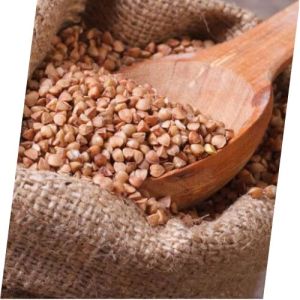
Buckwheat Millet Seeds
100 - 110 Per Metric Ton
1 Quintal (MOQ)

Buckwheat Millet
65 - 80 Per Kilogram
1 Ton (MOQ)
Nutritional Profile Buckwheat is highly nutritious and offers a range of essential nutrients. It is rich in complex carbohydrates, dietary fiber, and proteins, making it a valuable source of energy and promoting satiety. Buckwheat contains significant amounts of minerals such as magnesium, manganese, phosphorus, and copper. It is also a good source of vitamins like niacin, riboflavin, folate, and vitamin B6. Health Benefits Gluten-free: Buckwheat is naturally gluten-free, making it suitable for individuals with celiac disease or gluten intolerance. Rich in Antioxidants: It contains various antioxidants, including rutin and quercetin, which help in reducing inflammation, protecting against oxidative stress, and lowering the risk of chronic diseases. Heart Health: Buckwheat is beneficial for heart health due to its high content of magnesium, which helps regulate blood pressure and improve blood circulation. Blood Sugar Regulation: Its low glycemic index helps in stabilizing blood sugar levels, making it suitable for people with diabetes or those looking to manage their blood sugar levels. Culinary Uses Buckwheat can be used in various culinary applications, both in its whole form and as flour. Whole buckwheat groats can be cooked and used as a rice substitute, added to salads, soups, or porridge. Buckwheat flour is commonly used to make pancakes, crepes, noodles, bread, and baked goods like muffins and cookies. Buckwheat noodles, known as soba noodles in Japanese cuisine, are a popular dish enjoyed both hot and cold. Cultivation and Adaptability Buckwheat is a hardy crop that can thrive in diverse climates and soil conditions. It grows quickly and is well-suited for cultivation in cooler climates and at higher altitudes where other cereal grains may struggle. Buckwheat is often used as a cover crop in agricultural systems to improve soil fertility, suppress weeds, and attract beneficial insects. Its short growing season makes it suitable for intercropping and rotation with other crops, contributing to sustainable farming practices. Cultural Significance Buckwheat has a long history of cultivation and consumption in various cultures around the world. It is particularly prominent in Eastern European, Russian, and Japanese cuisines, where it is used in a variety of traditional dishes. Buckwheat-based dishes are often associated with festivals, holidays, and cultural celebrations in these regions. Economic Importance Buckwheat cultivation plays a significant role in the agricultural economy of many regions worldwide. It serves as a staple food crop, a source of income for farmers, and a valuable export commodity in some areas. Buckwheat production contributes to agricultural diversity, food security, and sustainable farming practices in regions with suitable climatic conditions for its cultivation.
Best Deals from Kuttu

Buckwheat Millet
Get Price Quote
10 Ton (MOQ)
Buckwheat, mostly known as kuttu in India, which is mostly consumed during Navratri fasting. This diabetic-friendly millet also influences maintaining blood pressure levels. This magical millet crop is a boon for heart health and can lose excess weight with regular consumption. Buckwheat millet also features anti-cancer characteristics.

Buckwheat Seeds
Get Price Quote

Down buck wheat
Get Price Quote
Down buck wheat, polyester feather sofa, Fabric, Wallpaper, Feather